loading...
Please welcome Tara Hebert, one of my Editorial/Writing Interns for the Spring 2013 program, as she discusses many of the nuances that determine a restaurant review’s quality. Originally posted as an “Intern’s Week in Review,” Tara’s article poses such interesting (and complicated) questions, I thought it deserved its very own spot as a featured post. So, read on, for what makes a Restaurant Review Good, Bad, or Ugly, especially when writing a food blog. –Helana
—
 As time passes, we, the Clearly Delicious interns, are becoming a fluid team. We are getting to know each other, learning our strengths, and settling into our weekly routines. Together, we work to make Clearly Delicious the best that we can.
As time passes, we, the Clearly Delicious interns, are becoming a fluid team. We are getting to know each other, learning our strengths, and settling into our weekly routines. Together, we work to make Clearly Delicious the best that we can.
But what is “best” exactly? I asked my fellow interns for input here, and everyone offered great advice. According to Amy Laws, we aim to be original and creative. Erica deVeer thinks we can strive to be the best through clarity, quality, and accessibility. Meredith Quinn stresses the importance of connecting with the readers and forming our blogging community.
To be the very best, we push for that golden combination of all these traits. Kenji Lopez-Alt of Serious Eats created very helpful guides for measuring quality:
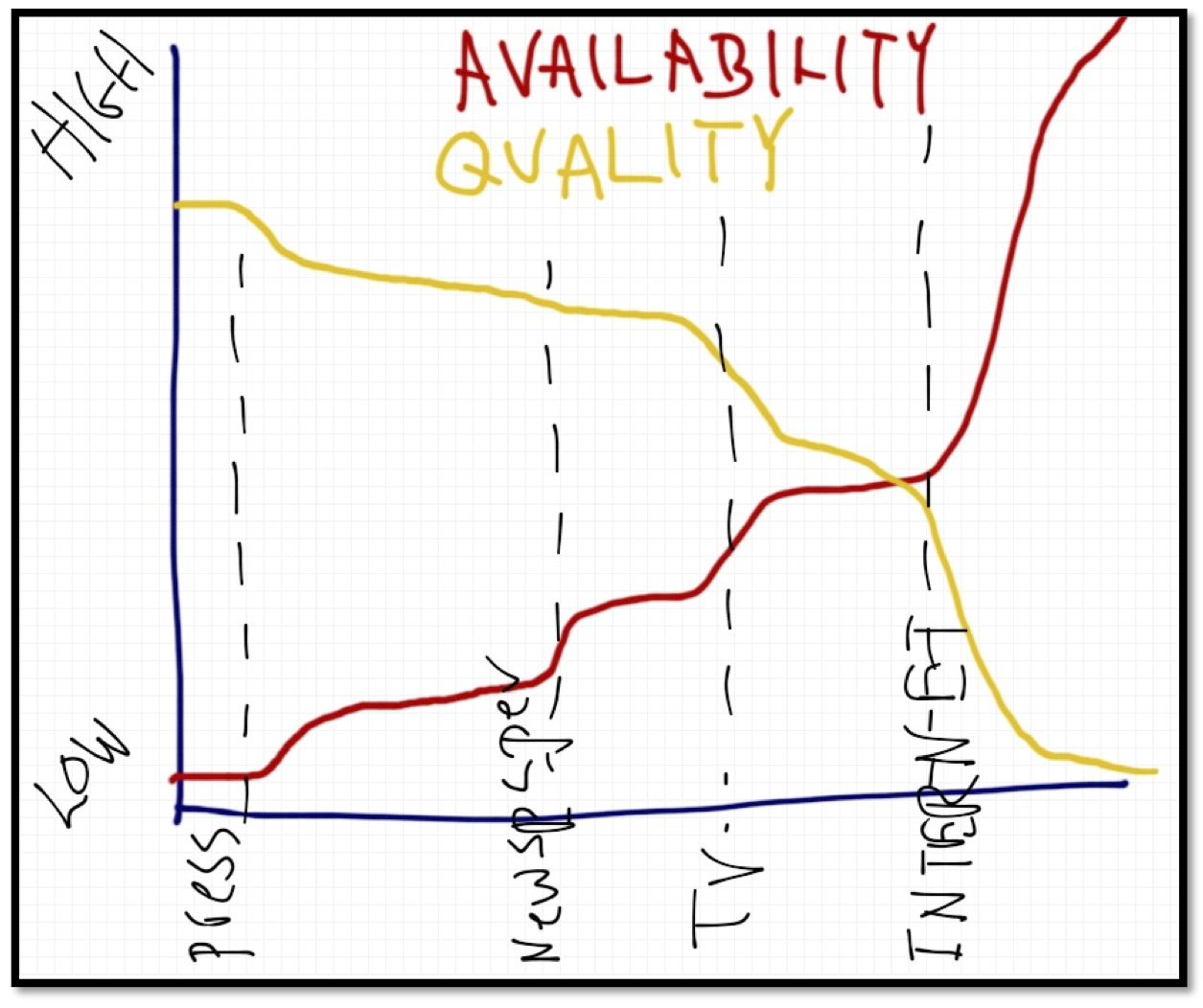
Pictured: Erica and Meredith both prefer Kenji’s hand-drawn line graph measuring authority and quality in determining what makes a blog post “best.” (Read graph in context with Part 1 here.)
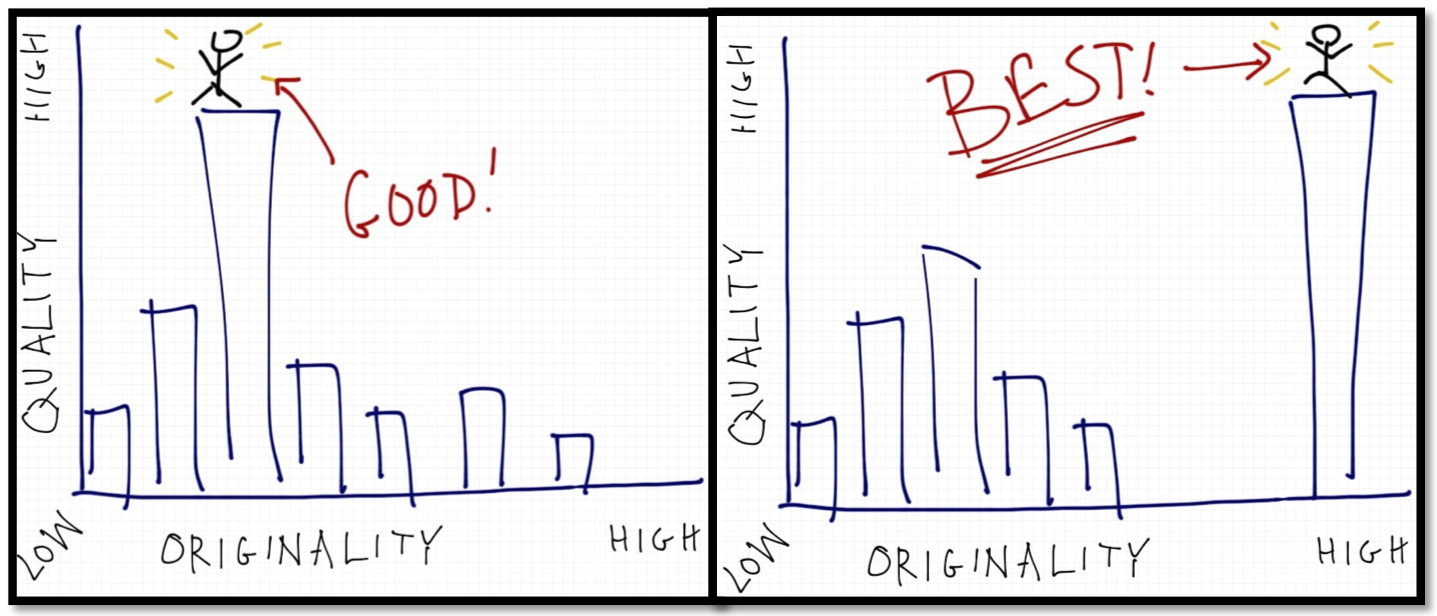
Pictured: Amy thinks Kenji hits on her definition of “best” perfectly here with the culmination of originality and quality. (Read graph in context with Part 5 here.)
[Note: Congratulations are in order for Kenji Lopez-Alt on his recent James Beard Award nomination. Go Kenji!]
In one of our first sessions, we shot right out of the gate with the series of Kenji Lopez-Alt articles from his keynote speech at Food Blog South 2013, and through our extensive meetings and all the time spent in between, I have begun to see just how much work is actually required to publish those nicely polished pages readers see.
Why work so hard, one may ask?
Why spend so much time on each post, tweaking it until it is “perfectly golden brown and crispy?”
This is where Helana emphasizes the importance of quality over quantity to us, and I have to agree.
Every word counts in a world where people are so strapped for time, and if your blog becomes renowned for sloppy, unclear posts featuring poor ideas or recipes that don’t work, people will not continue to waste their time sorting through your mess.
Since today’s society regularly looks for “easy breezy” reading where they can acquire information quickly, a post should possess a level of polish and not be something readers should have to take too much time with. Otherwise, they will likely not return to your blog.
Essentially, if you aren’t proud of what you publish, then readers will notice where the content is lacking.
For many people, “commitment” is a very scary term. Many blogs fall off the radar when their leaders lose the drive to pursue success, to devote the time necessary to this endeavor, and to continue crafting interesting and engaging posts.
On the other hand, some blogs focus just on the issue of consistency, putting themselves on a strict “one post per day” schedule that they struggle to maintain. This is when content is likely to suffer due to the blogger being too overloaded, stressed, and lacking ideas. For a single writer, this is often a far too ambitious goal, especially when it comes to creating completely new and original content.
Even though a post’s publishing may be delayed, it is always better for a writer (and their blog’s reputation) to spend the extra time polishing the work. Plan ahead, but don’t be afraid to adjust that plan when needed.
Instead, commit to your blog, set manageable goals, and only reveal content of which you are truly proud. As we have been wisely warned—
“Don’t get too eager with that publish button.”
Life is full of curveballs, and we all experience our fair — or sometimes more than fair — share of them. A successful blog can roll with the flow, overcome these obstacles, and stay committed to its cause.
No lesson is complete without examples, right? Let’s take restaurant reviews, for instance.
To accurately compare two reviews, I am drawing upon many parallels. This comparison features two male bloggers, which are definitely the minority in this field. Neither of them are chefs; however, one claims to be while the other firmly professes that he is not (amateurgourmet…the name says it all). It also features reviews of two local restaurants: one is a Louisiana legend itself and the other serves a classic Louisiana delicacy).
The two restaurants in question are not exactly paralleled in “class,” but they deserve the same level of respect in their review. A systematic and objective approach to reviewing will achieve this respect every time, allowing readers access to a fair view of the business in question.
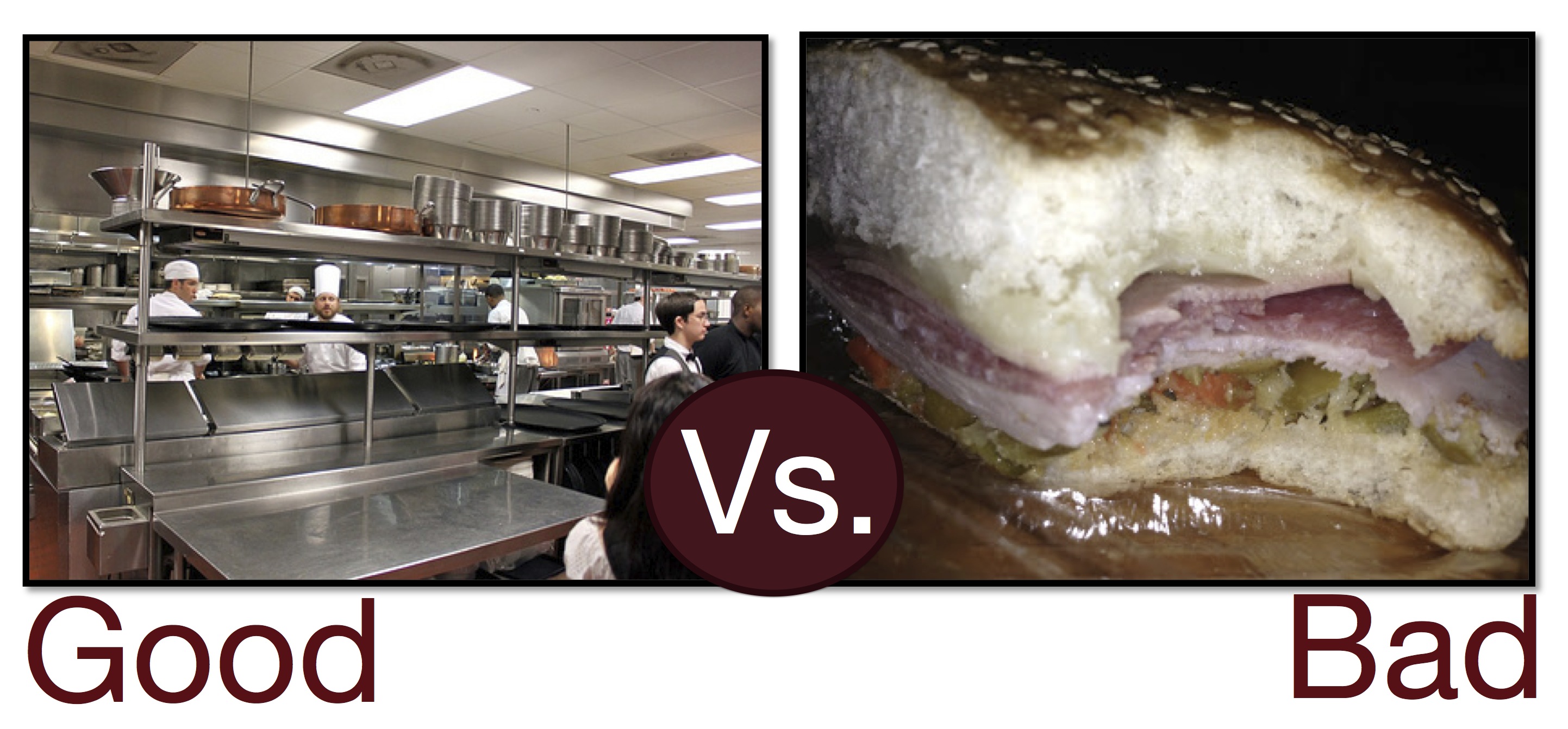
The Good Review
For an example of a good review, I look to Adam Roberts of the Amateur Gourmet’s review of Commander’s Palace in New Orleans here.
Adam Roberts is a law student turned full-time food blogger. Roberts writes about his exploits as an amateur chef as he explores the tricks and techniques of the trade. His blog outlines both successes and failures in his culinary adventures.
For more from Roberts, check out his Youtube channel here or his Twitter here.
Pictured: a shot of the Commander’s Palace Sign in New Orleans, Louisiana, from Adam Roberts’s blog, The Amateur Gourmet. Read the review here.
Pros:
1. He starts with a brief history and vivid description of his surroundings. This allows readers to get a handle on the atmosphere as well as what to expect if they decide to visit the restaurant themselves. He writes,
“A New Orleans institution (it’s been there since 1880!) the whole place, on the surface, positively oozes charm and character.”
THEN
“The first thing that you experience upon walking in is a crew of restaurant staff smiling and greeting you. Then you turn your head and see a jewel-box of a room with chandeliers hanging from the ceiling and balloons floating from the chairs.”
2. The pictures are clear, crisp, attractive, and varied. They give a good representation of all aspects of the restaurant, staff, atmosphere, and the meal, of course. He even includes pictures of the kitchen, so you know they are proud of their restaurant.
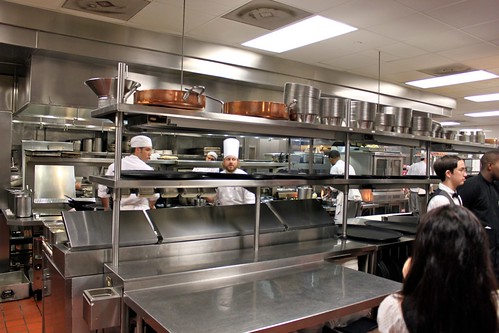
Pictured: inside the Commander’s Palace Kitchen during Adam Roberts’s review in New Orleans, LA. Read full post here.
3. Each dish or drink is described in detail for its good and bad qualities. Descriptive words such as “fragrant,” “frothy,” and “intense” let readers experience the meal with their senses.
“Perfectly crisp, perfectly buttery and fragrant with garlic this was a lovely start to the meal.”
[That sure does sound like some good garlic bread to me.]
4. When reviewing a signature dish, the regional story is given the limelight. This allows readers to connect better with a menu item that they might be unfamiliar with otherwise. In a trio of soups, Roberts was served turtle soup, which is a regional specialty. He highlights this with a little anecdote connecting his experience with the soup’s special story:
“Commander’s Palace is famous for its turtle soup. Later, at the New Orleans Cooking School (I’ll tell you about that soon) the cooking instructor told us that the turtle soup at Commander’s (which gets drizzled with Sherry, table-side) isn’t made with the turtles that we kept as pets as a kid. It’s made with ‘the mean snapping turtles that bite you.’”
Cons:
1. One thing I find that could have improved this review would be a mention of the prices readers could expect to pay for the meal reviewed. Especially since it is a higher-end restaurant, allowing readers to get a glimpse of prices beforehand would help them to know more fully what to expect for their own dining experiences.
The Not-So-Good Restaurant Review
For this example, I am calling into play a blog that I do not think fairly reviewed this local restaurant.
Jay Ducote of biteandbooze.com reviewed 926-Muff here.
Ducote is a self-titled blogger, food and beverage writer, radio host, culinary personality, and self-titled, “chef.” He makes a living writing about the food he eats and beverages he drinks on his blog.
For another look at Ducote’s work, check out his YouTube channel here.
Pros:
1. He did review a local restaurant, and we all know the importance of supporting local businesses.
2. He tried their most popular menu item, a half-muffaletta, which is also a Louisiana classic.
[Note: The history of the muffaletta is wrought with controversy. Its origin is unsure, but Central Grocery in the French Quarter of New Orleans claims to have created this sandwich in 1906. It features Italian meats such as salami and ham, cheese, and an olive salad on a large, round, sesame seed-topped loaf. See here for Serious Eats’ take on the Central Grocery muffaletta. Also, special thanks to Lorin Gaudin for her help with the mystery of the muffaletta.]
3. He included pictures… (refer to “Cons”)
4. He gives the owner’s name and a positive impression of her from the get-go:
“I swung by the little joint on Congress at Perkins the other day and met owner Leigh Ann Town. With a kind smile and welcoming opening of the walk-up window, Leigh Anne asked what she could get for me.”
5. When ordering, Ducote noted the option between a hot or cold sandwich as a perk to 926-Muff and articulately explained his choice in favor of warming the sandwich:
“I opted for the heat in order to crisp the bread and melt the cheese.”
I feel this description creates an accurate and enticing image of Ducote’s half-muffaletta.
Cons:
1. While not mandatory, this review does not offer the price of the sandwich. Featuring the price would give readers an insight of value and what to expect at the restaurant.
2. The pictures included were of poor quality (low-lighting, bad composition) and did not showcase the sandwich positively at all. The photograph was an afterthought, and unfortunately, this was clearly evident. While writing a review, taking time for a decent picture should be one of the top priorities.
Pictured: photo of partially-eaten Muffaletta at Jay Ducote’s website, Bite and Booze. Read the review here.
3. In the review, the blogger admits to taking the sandwich home and scarfing it down:
“Then I got my sandwich, took it home, and scarfed it down…”
While 926-Muff is a walk-up eatery, even this is not explained. Nor is the building, atmosphere, or experience at the restaurant described.
4. He also does not take the time to learn about the restaurant, leaving any personal element out of his review. Every local eatery has a story behind it that should be highlighted in some way. Ducote writes,
“Then [sic] we chatted for a bit about how I heard about the place (driving by up and down Perkins) and other things that I might happen to do or not do in the food world of Baton Rouge.”
This section focuses on him, how he found it, what he does, and what he doesn’t do. The only thing missing here is Leigh Ann and 926-Muff’s story.
5. The review does not go into much detail about the sandwich: its flavor, messiness, price, texture, scent, size, etc. The reader is given a run-down of ingredients, but the description stops at “satisfying.”
How do we define satisfying?
6. Every compliment the sandwich and restaurant receive in this review—which are sparse and minute in detail—were suddenly defunct with the last sentence:
“By no means will it replace the occasional trip out to Anthony’s Italian Deli on Florida Blvd. for what I believe to be the best muffaletta on the planet, but 926-Muff is definitely a welcome addition to the Baton Rouge food scene.”
This goes back to my issue of blogging commitment. When writing a review, the blogger should commit to that task at hand, not flop back and forth, unable to decide which restaurant he wants to be talking about. Is this because he only felt compelled to write the review after receiving free food?
If we take evidence from the right sidebar of biteandbooze.com, where a square features a “This could be you!” type of advertisement, and right above the donate button are the words, “all this eating and drinking is expensive! buy me a beer or meal and you’ll get a shout out!” we see this may be likely.
While I cannot say for sure, the lack of commitment to and real enthusiasm in this review are evident.
For other perspectives on 926-Muff, see these sources:
The Reveille | 225 Magazine | WJBO
Conclusion:
Adam Roberts delved into the dangers of eating everything placed in front of you just for the sake of free food with his article, “Chutzpuh, Truffles, & Alain Ducasse.” Comically, he warns that this terrain comes with some definite dangers. You never know, you could end up singing the “Facts of Life” theme song in the middle of a nice restaurant…
http://youtu.be/gHMny13TZ_w
Deb Perelman of Smitten Kitchen also mentions this idea on her “About” page with this statement:
“Is this an email about promoting a product? Smitten Kitchen does not accept any free products or cookbooks for review. Everything that has ever been mentioned on the site has been purchased with personal funds, usually on a whim.”
This philosophy allows for a heightened sense of trust that her reviews are realistic, honest, and useful. The products are likely not ridiculously priced, and we know there is no ulterior motive for giving a product a “good” review here.
This is simply a question of blogging ethics. When is it okay to receive gifts and let those influence your content, and when should you stay away from it?
These sites show the true meaning behind that word “committed.” Much time is spent between clicking “create” and “publish.” Roberts’s post shows his commitment to his field, to writing, and to his blog. The result? Great posts, solid information, clear images, the whole nine yards… All the while, he is keeping it local (to us, anyway), too!
For further proof of a good review, check out the comments section. On Adam’s Commander’s Palace review, I discovered this comment:
Brooke @ Food Woolf wrote: “I’m so glad you wrote this post. I had so much to say about Commander’s Palace and now I don’t have to. You nailed it! xoxoxo”
Thoroughly covering all topics of conversation within a single review? Now, that is what I would call “nailing it” too.
—
Follow Helana on Pinterest: http://pinterest.com/helana/
Twitter: https://twitter.com/DancesWLobsters
Facebook: https://www.facebook.com/pages/Clearly-Delicious/103136413059101
Tumblr: http://clearlydelicious.tumblr.com/
Instagram: http://instagram.com/helanabrigman
The Good, the Bad, & the Ugly: Blogging Restaurant Reviews,
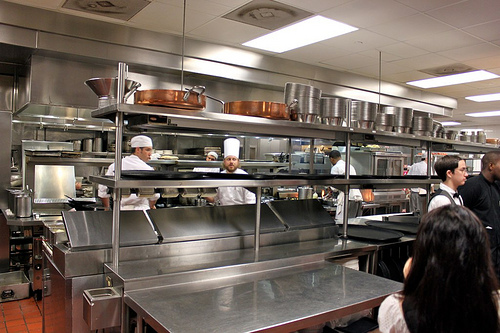
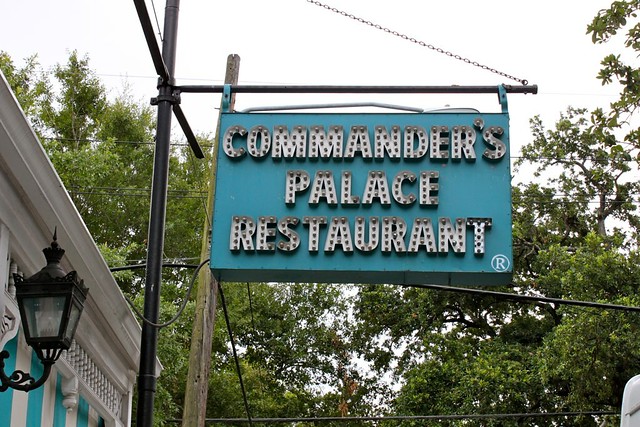
1 Comment
Clearly Delicious » A Little Bit(e) of Everything in Columbia, SC: Favorite Eats
May 7, 2013 at 9:55 pm[…] « […]